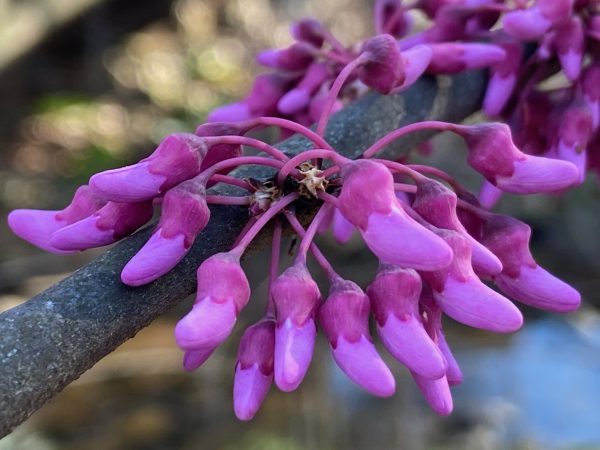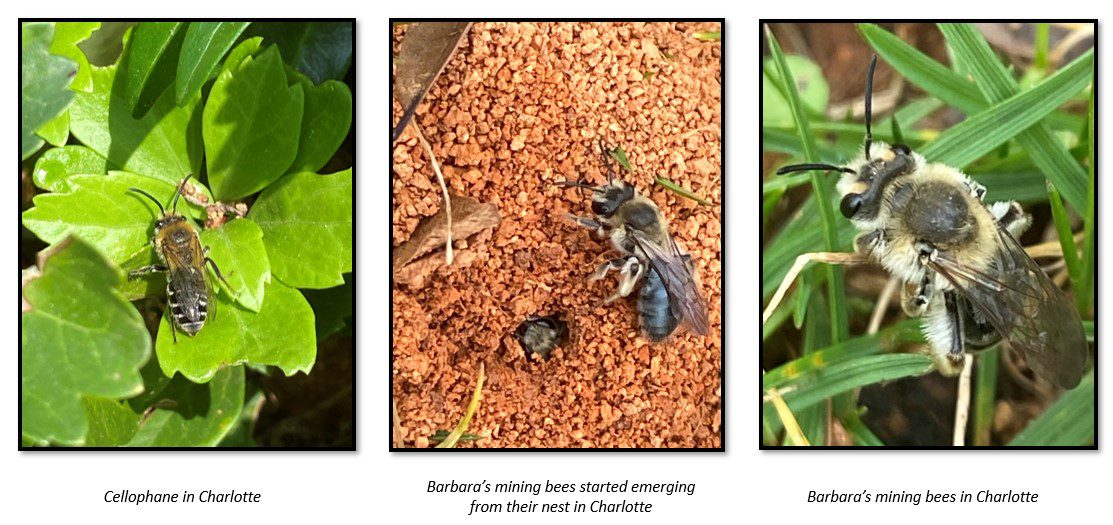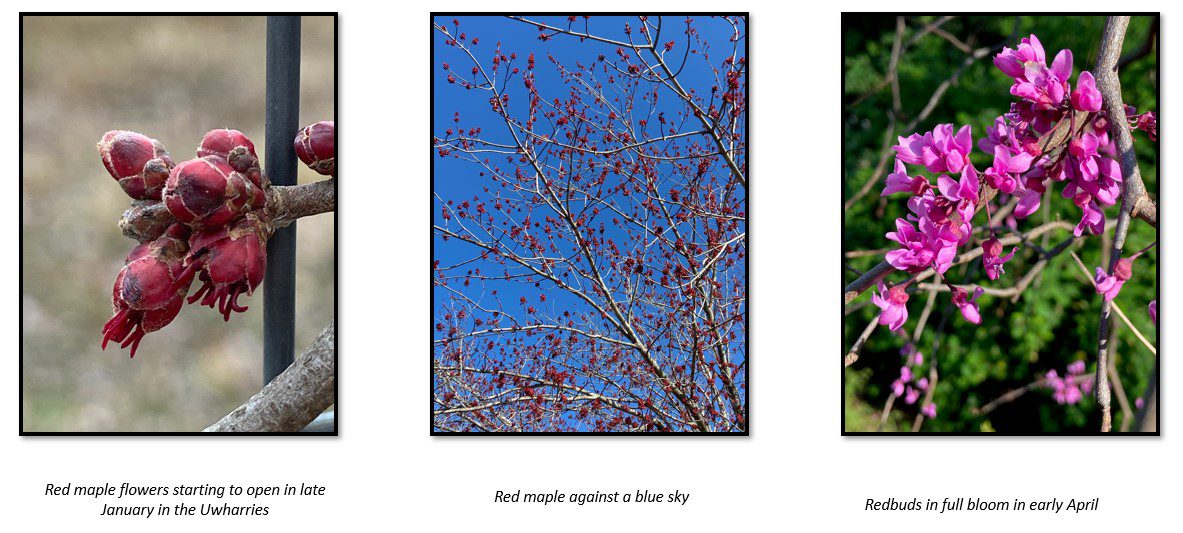Trees for Pollinators

What sort of image comes to mind when you think of a “pollinator garden?” I see an island of native grasses and perennials surrounded by a sea of turf. That’s the garden I helped to install in my neighborhood park in Charlotte. We needed full sun to support the coneflowers, goldenrods, black-eyed Susans and mountain mint so we chose a spot as far as possible from the canopy of towering trees.
I’m really not fond of this model. It allows us to tell ourselves that once we set aside a little space for “habitat” our work is done, that it doesn’t matter how we manage the rest of our landscape. I’d prefer to see native plants incorporated throughout, but sometimes you gotta do what you gotta do. Our little ersatz meadow is better than nothing. It’s a baby step toward rebuilding a functioning ecosystem in the Anthropocene.
And it does seem to benefit many invertebrates. Throughout the summer – and well into fall – it attracts a variety of butterflies, bees, wasps and flies. But what about spring? That’s a crucial time for many pollinators. Some species emerge quite early. In my neighborhood, carpenter bees might pop out anytime we have a string of warm days in winter. I regularly see mining bees by the end of February and cellophane bees in April.

Gabriella Garrison, eastern piedmont habitat conservation coordinator with the North Carolina Wildlife Resources Commission, notes that when bumblebee queens emerge in spring, their first objective is to find forage. “It really is life, or death for them,” she said. “Saving one queen is basically like saving hundreds of bumblebees that year.”
In a healthy piedmont forest, woodland wildflowers meet some of this need. Trout lilies, spring beauties and bluets are known as spring ephemerals because their sweet presence on the landscape is all too brief. Many of the specialist native bees that forage on them are equally ephemeral. They will complete the adult stage of their life cycle long before the mountain mint and goldenrods kick in.
Problem is, in the average park, or suburban yard, it’s often difficult to create the rich, moist, shady conditions where many of those spring ephemerals flourish. Fortunately, the herbaceous layer is only part of the equation. The trees themselves can play a vital role in sustaining pollinators until sun-loving plants come into their own.
While most trees are primarily wind-pollinated – which is why cedars, pines and oaks are notorious allergens – there’s increasing evidence that insects also make use of this pollen. Certain tree species also rely heavily on insects for more targeted pollination. Adding them to your yard can help support a diverse suite of pollinators.“I am always pushing the importance of trees for pollinators,” Garrison said. She also appreciates that trees provide many additional benefits. They act as host plants for many caterpillars, which in turn support bird populations.

Trees improve air quality and cool air temperatures. This moderates the heat island effect in urban areas like Charlotte, where we’re rapidly losing our tree canopy to age and development. But even in rural areas, having shade trees on the south and west sides of a home can significantly reduce energy costs. Trees also sequester carbon. “This ultimately supports pollinators, and all critters,” Garrison said. That includes us humans.
From my perspective as a gardener, trees are simply much easier! Typical pollinator gardens aren’t manicured, or fussy, but truth be told, grasses and perennials still require some maintenance. If you aren’t a hands-on gardener, but you’d still like to help support pollinators, plant some native trees. Do yourself and the trees a favor and get them in the ground before they leaf out in the coming weeks. Plan to mulch them and water them regularly for the first year. After that, all they’ll need is an occasional drink during prolonged dry spells.
A park, or yard with a diverse collection of the following species – listed roughly in order of bloom sequence – might just change our image of the pollinator garden.
- Red maple (Acer rubrum)
- Black willow (Silix nigra)
- Redbud (Cercis canadensis)
- Serviceberry (Amelanchier canadensis)
- Dogwood (Cornus florida)
- Cherry laurel (Prunus caroliniana)
- Kentucky yellowwood (Cladrastis kentukea)
- Tulip poplar (Liriodendron tulipifera)
- Black cherry (Prunus serotina)
- Basswood (Tilia americana)
- Black gum (Nyssa sylvatica)
- Catalpa (Catalpa bignonioides)
- Sourwood (Oxydendrum arboretum)